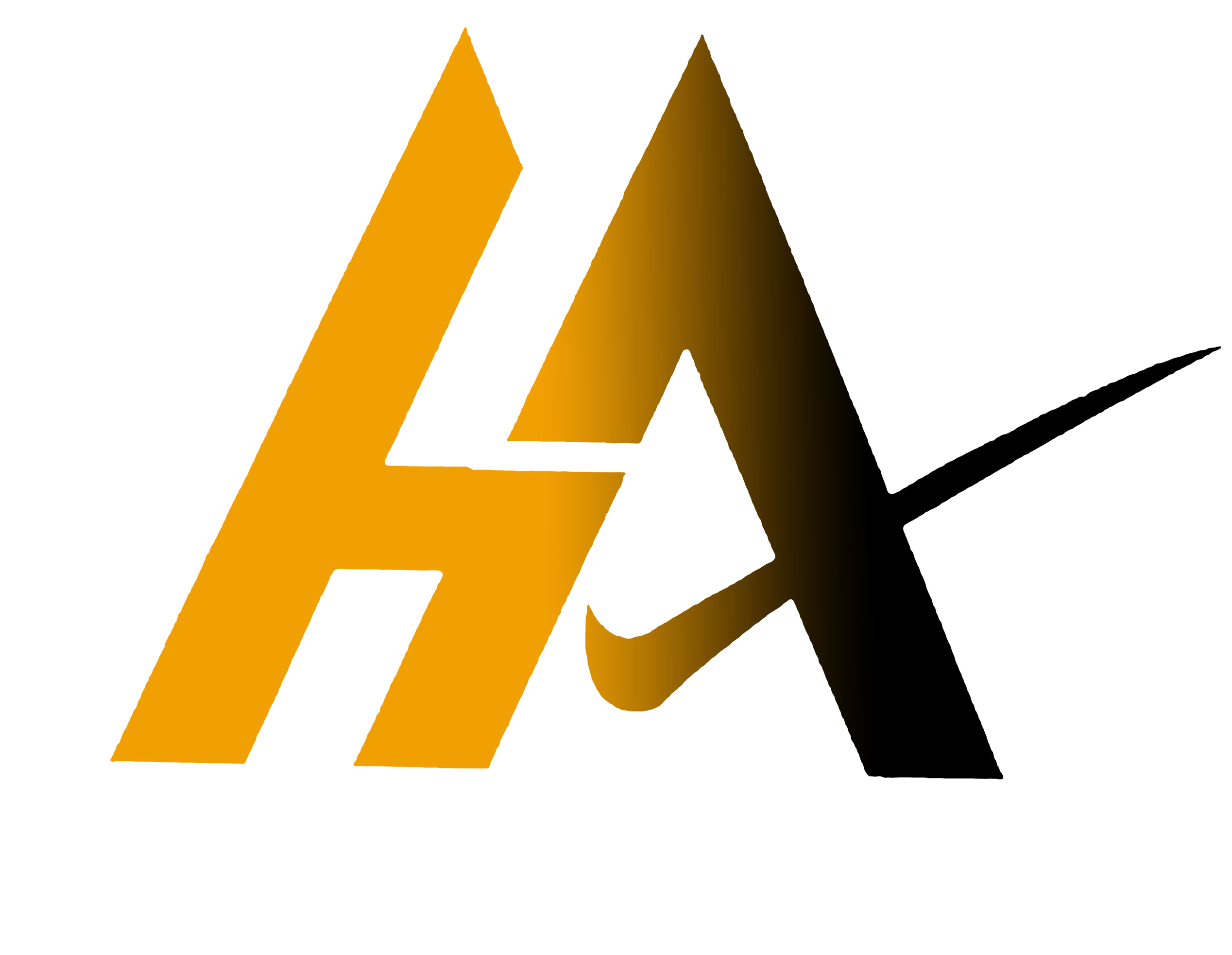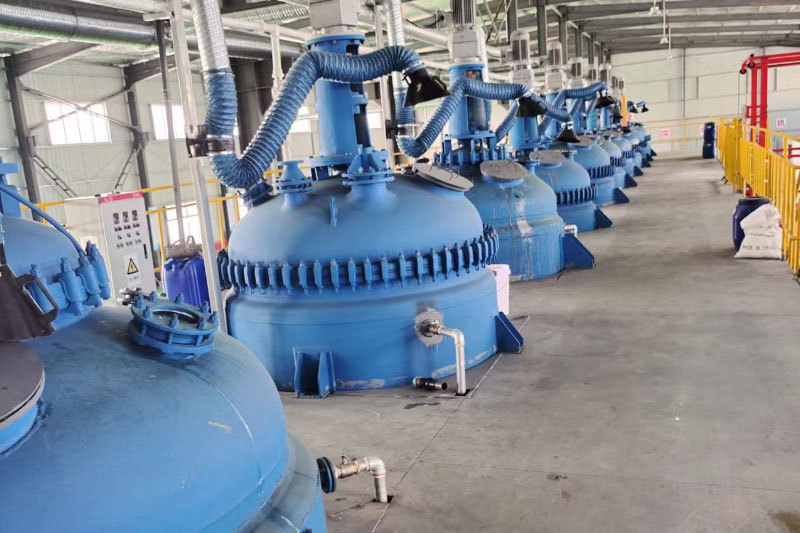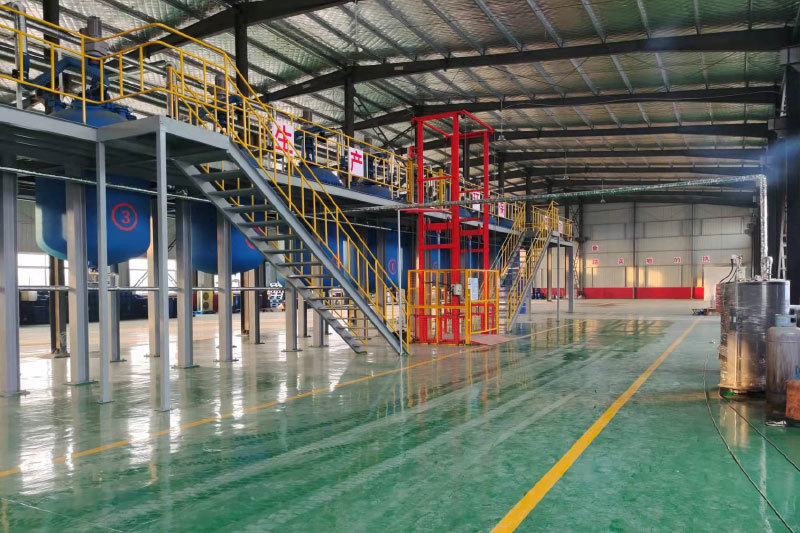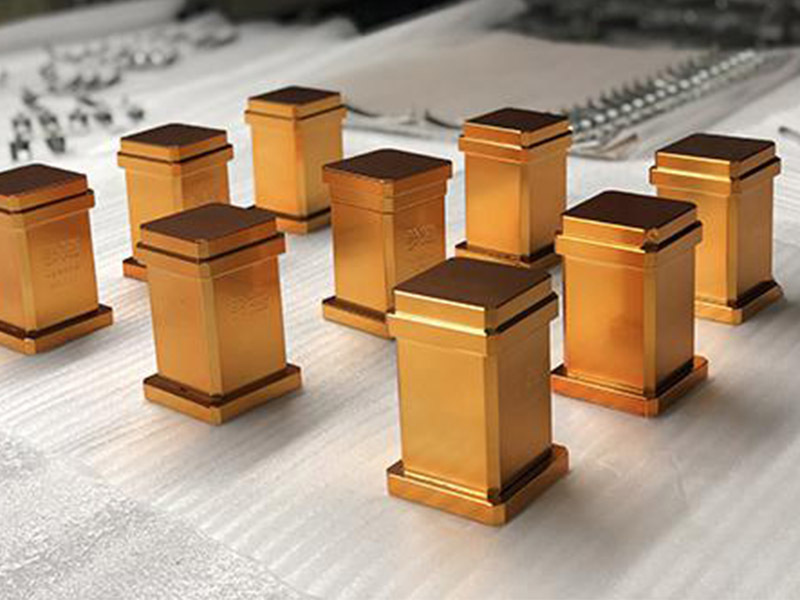News Details
31
2023
-
10
Galvanizing additives
氯化物镀锌溶液是简单盐类组成的配方。氯化钾是支持电解质,虽然它对锌离子有微弱的络合作用,但它主要还是起导电和活化阳极作用,所以在没有添加剂存在的条件下,得到的是一种粗糙疏松呈海绵状的镀层。在这种溶液中要获得结晶细致的镀层,完全要靠添加剂(或称光亮剂)。氯化物镀锌的光亮剂也可分初级和次级两种,或称第一类和第二类光亮剂。
The main classification of zinc plating at home and abroad is mainly divided into three categories: cyanide zinc plating, alkaline zincate zinc plating and chloride zinc plating. Product action carrier brightener is the primary brightener, also known as softener or carrier. Its function is to solubilize the main brightener insoluble in water, so that it is evenly dispersed in the plating solution. The primary brighteners of chloride zinc plating are mostly non-ionic surfactants and anionic surfactants. The chemical structure of the carrier brightener contains hydrophobic alkyl and aryl groups, and the hydrophilic groups are polyoxyethylene groups, polyoxypropylene groups, sulfonic acid groups, etc. For example, there are adducts of higher aliphatic alcohols and ethylene oxide, and their representative products are Pingjia, whose molecular formula is: R-O-(CH2CH2O)nH; There are adducts of alkyl phenol and ethylene oxide, and their representative products are OP emulsifier (also called TX emulsifier), whose molecular formula is: R-C6H4-(CH2CH2O)nH; There are also adducts of higher aliphatic alcohols with ethylene oxide and propylene oxide, they are called polyoxyethylene fatty alcohol ether block copolymers and have the formula R-O-(CH2CH2O)n-(CH2CH2CH2O)nH. Fatty alcohol polyoxyethylene ether or alkyl polyoxyethylene ether can still be used in ammonium chloride zinc plating solution, but in potassium chloride solution, because their cloud point is too low, they can not be used directly. For nonionic surfactants, when the hydrophobic group is the same, the number of molecules added to ethylene oxide increases, the hydrophilicity is greater, and the cloud point also increases. In order to increase their cloud points, these nonionic surfactants need to be sulfonated to increase their cloud points in potassium chloride or sodium chloride solutions. The carrier of CZ-03 chloride zinc plating brightener is different from the above carrier brightener usually used. It is mainly a nonionic surfactant added by naphthol and ethylene oxide. In order to expand the current density range, it is compounded with polyoxyethylene laurate and HS-1000 surfactant. In order to improve its cloud point, it is also sulfonated and named HW-4 high-temperature leveling agent. As a carrier brightener for CZ-03A agent, the main components of HW-4 high-temperature leveling agent are: naphthol and ethylene oxide addition of nonionic surfactant 150~250g/L polyoxyethylene laurate 15~25g/L HS-1000 surfactant 10~20g/L in potassium chloride zinc plating solution with a cloud point of 60~65 ℃, which can meet the requirements of all-weather production in factories without refrigerators. Its dosage can be less than that of Pingjia or OP emulsifier sulfonated products, and it has better dispersion ability and deep plating ability, and it also has a certain bright effect. In this way, the plating can be crystallized more finely, and the dependence on the main brightener can be reduced, that is, the consumption of the main brightener can be reduced. The main brightener is the secondary brightener, chloride galvanized secondary brightener mainly aromatic aldehyde, aromatic ketone or aldehyde ketone reactant, can also be used heterocyclic aldehyde or heterocyclic ketone. Commonly used aromatic aldehydes are: anisaldehyde, sea jasmine aldehyde, veratraldehyde and o-chlorobenzaldehyde. Commonly used aromatic ketones are: benzylideneacetone, dibenzylideneacetone, pepper, benzylideneacetone modified. Reactant of benzeneacetone and o-chlorobenzaldehyde. Most of these compounds have a structural unit of a vinyl-substituted carbonyl compound. The auxiliary brightener usually refers to some substances that assist the main brightener to improve the grain refinement, smoothness and brightness of the electrodeposited layer. Sometimes will also have some specific functions (such as improving the characteristics of the low current area, expanding the current range, to prevent the high current area scorching) of the component called auxiliary brightener. Chloride zinc plating auxiliary brightener, some amino acids such as amino acid, lysine, naphthalene sulfonic acid, aromatic carboxylic acid and its salts can make the low current area bright, expand the bright current range. Certain nitrogen-containing heterocyclic compounds, such as nicotinic acid and 2-azobenzamide, are effective in brightening and leveling the low current area. Certain quaternary ammonium cations, such as benzylpyridine, can provide enhanced brightness and leveling in the low current region. Tests have shown that some aromatic aldehydes and aromatic ketones are better than those added separately, mainly in the leveling performance of the plating solution. Therefore, we use benzylidene acetone and o-chlorobenzaldehyde as the main brightener. In order to reduce transportation costs and reduce customer production costs, in the CZ-03 B agent brightener, we increase the concentration of the main brightener to 3 to 6 times the general formula. Such a high main brightener requires a good solubilizer. MO solubilizer has excellent effect on this. Even if the concentration of aromatic aldehyde and ketone is as high as 250g/L, and the temperature is minus 6 ℃, it can still maintain transparency without precipitation. The quality of alkaline zincate zinc plating depends on additives. If you do not add additives can only be plated spongy coating, which is different from cyanide galvanizing, only after adding additives to get a fine and bright coating, so additives play a decisive role in galvanizing. However, the addition of additives will increase the brittleness of the zinc layer, and the more added, the greater the brittleness. The core technology of alkaline zincate galvanizing is the development of additives. Cyanide-free zinc plating has attracted wide attention because it has the least toxicity and the simplest wastewater treatment among the three major zinc plating types. Most of the additives used today are DE or DPE-Ⅲ, which were developed in the 1970 s at low prices. Although this traditional additive has excellent brightness, it is comparable to cyanide zinc plating, however, it has the disadvantages of poor dispersion ability and narrow bright area of low current. This test obtains an alkaline non-cyanide zinc plating additive with excellent performance through synthesis research and optimization. The main innovations and research results include the following aspects: 1. The zinc plating additive is obtained by using an amide-containing ditertiary amine as an intermediate and two crosslinking agents, epichlorohydrin and dichlorobutane, respectively, which can significantly improve the bright current density range and dispersion ability, however, the efficiency is not high 2. The modified additives are obtained by mixing other organic amine modified amines in the intermediate and condensing them with crosslinking agents. Through linear potential scanning method and electroplating process test, the effects of additives prepared by condensation of modified amines with different structures and different crosslinking agents under the same conditions on the properties of plating solution and coating are analyzed and compared. The bright current density range and dispersion ability of the modified additives are slightly reduced, but the cathode current efficiency is improved, among these modified additives, epichlorohydrin crosslinking intermediate and dimethylamine E-2, dichlorobutane crosslinking intermediate and tetramethylpropylenediamine are D-13 synthesized to obtain two additives with better comprehensive performance. 3. The E-2 of two additives with good comprehensive performance and the content of modified amine in the synthesis of the D-13 are examined. For the E-2 of additives, it is more appropriate to maintain the amount of intermediates and modified amines participating in the reaction at 21, while for the D-13 of additives, it is more appropriate to maintain the ratio at 31 4. Through the above synthesis and performance research, a new type of additive with excellent performance is designed, and an in-depth study of its process performance proves that the new type of additive surpasses the traditional additive DPE-III in terms of comprehensive performance.
Previous article
Previous article
Related News
Chloride zinc plating solution is a formula composed of simple salts. Potassium chloride is a supporting electrolyte, although it has a weak complexing effect on zinc ions, but it mainly plays a conductive and activated anode role, so in the absence of additives, the obtained is a rough loose sponge-like coating. In this solution to obtain a crystalline fine coating, it depends entirely on additives (or brighteners). Chloride galvanized brighteners can also be divided into primary and secondary two, or the first and second types of brighteners.
Release time: 2023-10-31
The difference between alkaline galvanizing and acid galvanizing
There are significant differences between alkaline galvanizing and acidic galvanizing in terms of bath properties, coating characteristics, production efficiency and environmental impact.
Release time: 2023-10-31
How to deal with the ash in the low area of potassium chloride zinc plating?
The concentration of the plating solution is too low: the content of zinc chloride, potassium chloride and boric acid in the plating solution is low, resulting in a decrease in the quality of the coating.
Release time: 2023-10-31
Galvanizing refers to the surface treatment technology of plating a layer of zinc on the surface of metal, alloy or other materials to play a role in beauty, rust prevention and so on. The main method used is hot galvanizing
Release time: 2023-10-31
QIngdao Hongan surface materlal technolo

whatsapp:+8615689929096

E-mail:sales@qdhongan.com

Address: 105 Kangcheng Road, Guxian Industrial Park, pingdu city, Qingdao, Shandong Province
Customer Message
Copyright©2024 QIngdao Hongan surface materlal technolo LTD SEO Business License







